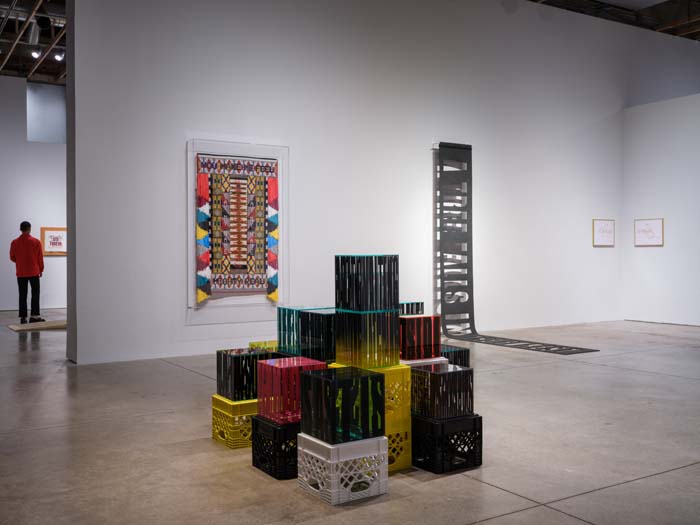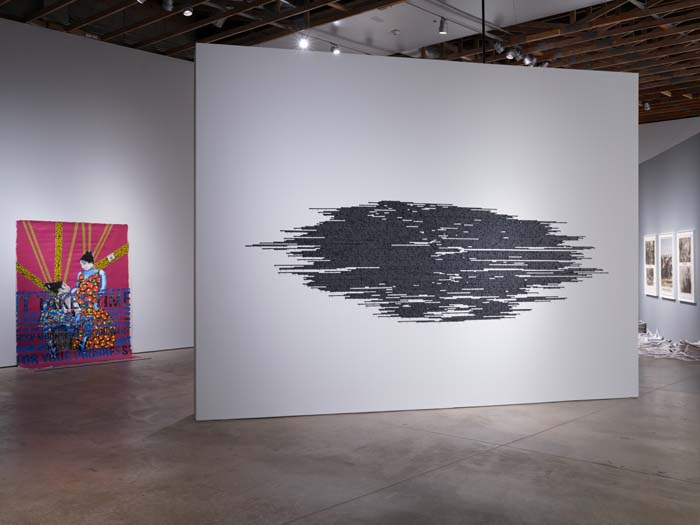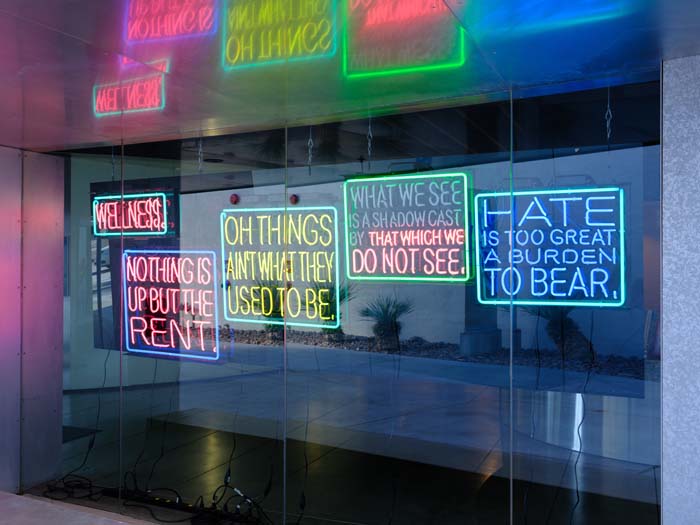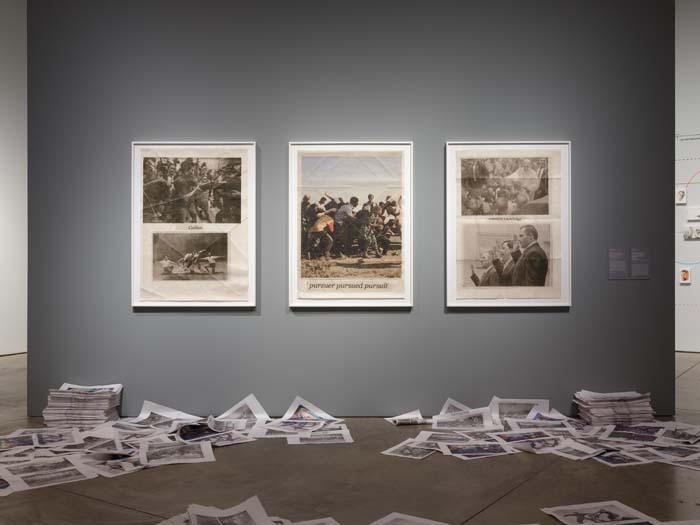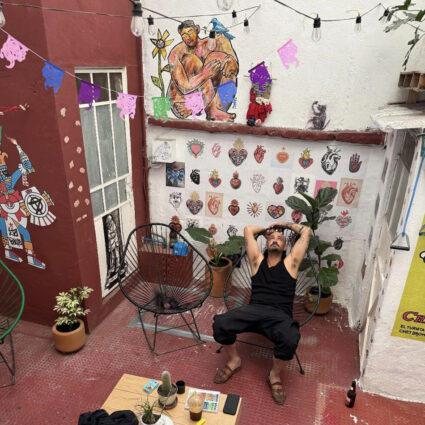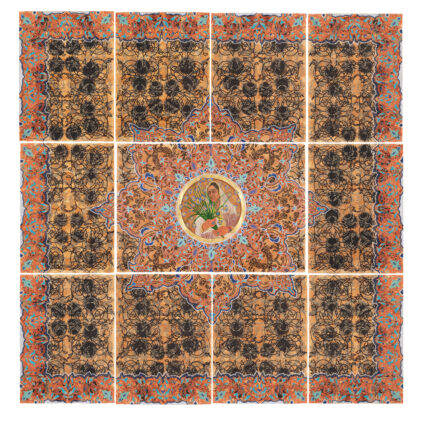Language in Times of Miscommunication presents work by eighteen artists illuminating the mercurial interplay between opinion, fact, and fiction.
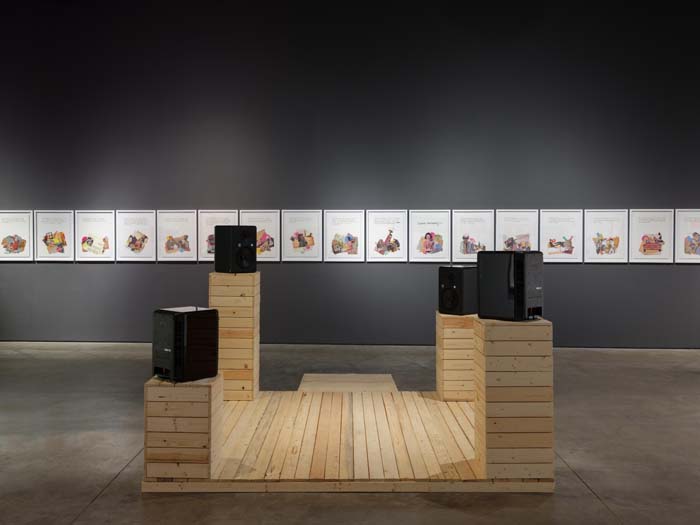
Language in Times of Miscommunication
March 4–August 27, 2023
Scottsdale Museum of Contemporary Art
The exhibition Language in Times of Miscommunication at Scottsdale Museum of Contemporary Art presents work by eighteen artists, working across various media, all incorporating forms of text, from the speculative to political documents, pulling from modes of poetry, prose, as well as informal use of idioms and slang, teased out from disparate transmissions of language, including protests, social media, advertising, and archival materials to create a swirling pastiche of communicative exchange—all refracted through each viewers own perceptional reality. The exhibition presents and (re)presents these works in a mosaic of preposition—illuminating the mercurial interplay between opinion, fact, and constructed fictions.
Organized by Lauren R. O’Connell, SMoCA curator of contemporary art, with support from Keshia Turley, curatorial assistant, the show sprawls through three galleries at the Old Town Scottsdale campus, as well as activating exterior spaces with work including a site-specific banner by Anna Tsouhlarakis (Diné, Muscogee Creek, Greek) reading, “It’s great how you acknowledge that Native Americans are still here,” perforating the performativity of land acknowledgements practiced in the art world and beyond, without measurable action of reparation and restoration towards Indigenous peoples.
Inside the galleries, works by Kristin Bauer instrumentalize bold and direct text as well as colloquialism to create work that points towards the semiotics of experience and the ways in which it is entangled with language. In her 2017 work Double Negative, the artist repositions the expression “If a tree falls in a forest and no one is around to hear it, does it make a sound?” into a nuanced existential exercise; not only questioning if the occurrence of a tree falling in the woods emits a sonic resonance, but questioning the prioritization of human interaction with sound, over other living creatures who also encounter, interact with, and produce aurality. The work skillfully asks more questions than it answers, all while visually playing with legacies of post war art, specifically the felt wall hangings of Robert Morris.
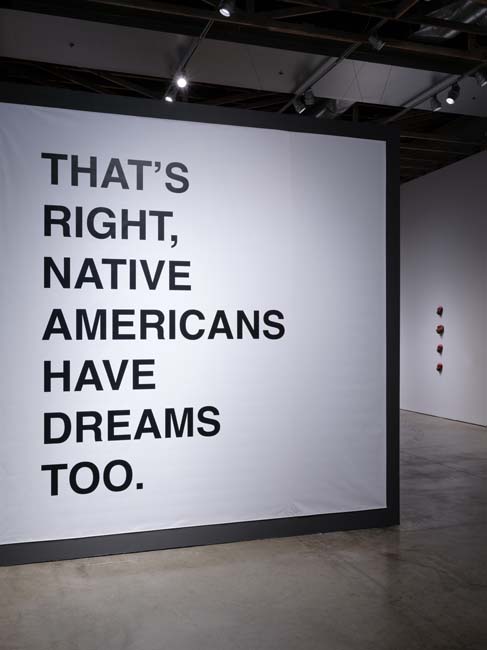
Moving further into the exhibition we find a massive wall-piece by Jeffrey Gibson (Mississippi Choctaw, Cherokee). The work lithely plays with pop culture references, song lyrics, and his own texts to point commentary towards issues facing Indigenous, queer, and marginalized communities—often incorporating notions of identity and representation. In SAY MY NAME (2018), Gibson situates the work in conversation with the 1998 hit of the same title by Destiny’s Child, while also making space for self-identification through listings of pronouns, lusciously beaded atop an Indigenous weaving, surrounded by fringe, pony beads, and tin-cone jingles, creating a richly textured visual experience.
The exhibition is densely packed and meaty, giving the viewer quite a bit to sink their teeth into. It is durational and takes time to go through, both while on site and after leaving, and offers opportunity for reflection and introspection—a call asking for a response.
